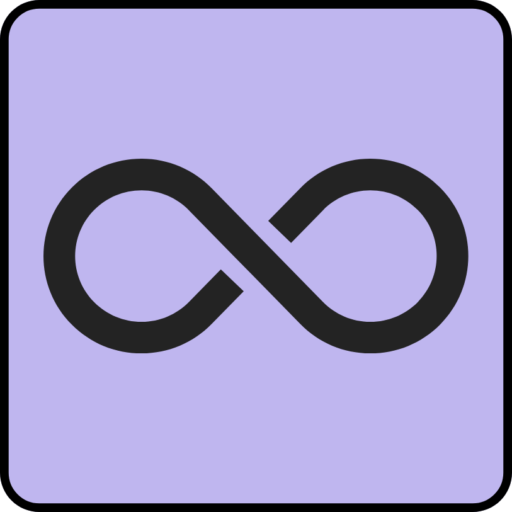Komi.io and Linktree are popular platforms for creating customizable landing pages that consolidate multiple links to various online profiles and content. These tools are particularly beneficial for influencers, content creators, and small businesses seeking to share multiple links with their audience efficiently. Komi.io, a relatively recent entrant to the market, offers a modern interface with an emphasis on user experience.
Linktree, having been established for a longer period, has become a widely recognized solution for link management. Both platforms strive to streamline the process of sharing multiple links in an organized format, enabling users to effectively guide their audience to different online destinations.
Key Takeaways
- Komi.io and Linktree are popular tools for creating a single link to house all of your content and links in one place, making it easier for your audience to find everything they need.
- Komi.io offers more advanced features such as lead generation, email capture, and integrations with popular marketing tools, while Linktree is more focused on simplicity and ease of use.
- Both Komi.io and Linktree offer customization options such as custom backgrounds, colors, and fonts to match your brand’s aesthetic.
- Komi.io provides detailed analytics and insights on link clicks, user demographics, and more, while Linktree offers basic click tracking and traffic insights.
- Komi.io’s user interface is more robust and feature-rich, while Linktree’s interface is simpler and more straightforward.
Unique Features of Komi.io
However, Komi.io stands out with its distinctive features, such as the ability to add video backgrounds, custom fonts, and animations to the landing page. Additionally, Komi.io offers a built-in contact form feature, allowing users to collect messages and inquiries directly from their landing page.
Linktree’s Focus on Simplicity
On the other hand, Linktree prioritizes simplicity and ease of use, offering a straightforward interface with essential features like link scheduling and link thumbnails.
Key Differences and Creative Freedom
While both platforms serve the same fundamental purpose, Komi.io’s additional features provide users with more creative freedom and customization options.
Customization Options and Branding
Customization is a crucial aspect of creating a personalized and branded experience for users’ landing pages. Komi.io excels in this area by offering a wide range of customization options that allow users to tailor their landing page to match their brand identity. Users can choose from various layout options, color schemes, and background images to create a visually appealing and cohesive look.
Furthermore, Komi.io allows users to upload custom fonts and add animations to their landing page, providing an extra layer of creativity and branding opportunities. On the other hand, Linktree offers more limited customization options, allowing users to change the background image, font style, and button colors. While Linktree’s customization options are more straightforward, they may be sufficient for users who prioritize simplicity and ease of use over extensive branding capabilities.
Analytics and Insights

Both Komi.io and Linktree provide users with analytics and insights to track the performance of their landing pages and individual links. Komi.io offers detailed analytics that include data on total clicks, unique clicks, click-through rate, and geographic location of visitors. Additionally, Komi.io provides insights on which links are the most popular, allowing users to understand their audience’s preferences and behavior.
On the other hand, Linktree offers basic analytics such as total clicks and link performance, but it lacks the depth of insights provided by Komi.io. While Linktree’s analytics may be sufficient for users who only require basic performance tracking, Komi.io’s comprehensive analytics offer valuable data for users who want to gain a deeper understanding of their audience’s engagement.
User Experience and Interface
User experience and interface play a significant role in the overall usability of a platform. Komi.io prioritizes user experience by offering a modern and intuitive interface that is easy to navigate and use. The platform’s drag-and-drop editor allows users to customize their landing page effortlessly, while its responsive design ensures that the page looks great on any device.
Additionally, Komi.io’s interface is visually appealing and provides a seamless editing experience. On the other hand, Linktree also offers a user-friendly interface with a simple layout that makes it easy for users to add and organize their links. While Linktree’s interface is straightforward and functional, it may lack the visual appeal and modern design elements found in Komi.io.
Pricing and Value
Pricing Plans and Features
Komi.io’s pricing plans are structured based on the number of features and customization options available to users. The free plan includes essential features such as unlimited links and basic customization options, while the paid plans offer additional features such as custom domains, advanced analytics, and premium support.
Linktree’s Pricing Options
On the other hand, Linktree offers a free plan with basic features such as unlimited links and link scheduling, as well as a paid Pro plan with additional customization options and analytics.
Comparing Value for Money
While both platforms offer value for their respective price points, Komi.io’s paid plans may provide more comprehensive features and customization options compared to Linktree’s Pro plan.
Conclusion and Recommendations

In conclusion, both Komi.io and Linktree offer valuable solutions for creating customizable landing pages with multiple links. Komi.io stands out for its extensive customization options, modern interface, and comprehensive analytics, making it an ideal choice for users who prioritize branding and in-depth insights into their audience’s behavior. On the other hand, Linktree excels in simplicity and ease of use, making it a suitable option for users who require a straightforward solution for managing their links.
Ultimately, the choice between Komi.io and Linktree depends on individual preferences regarding customization, branding, analytics, and overall user experience. Users should consider their specific needs and priorities when selecting the platform that best aligns with their goals for creating an effective and engaging landing page experience for their audience.
FAQs
What is Komi.io?
Komi.io is an online platform that allows users to create a personalized landing page to showcase their online presence and share multiple links in one place.
What is Linktree?
Linktree is a tool that enables users to create a single landing page with multiple links to share on their social media profiles.
What are the key differences between Komi.io and Linktree?
Komi.io offers more customization options, including the ability to add videos, music, and custom backgrounds to the landing page. Linktree, on the other hand, has a simpler interface with fewer customization options.
Which platform is more user-friendly?
Both Komi.io and Linktree are designed to be user-friendly, but Komi.io may have a steeper learning curve due to its wider range of customization options.
Can I use Komi.io and Linktree for free?
Both platforms offer free versions with limited features, as well as paid premium versions with additional features and customization options.
Which platform is better for businesses?
Komi.io may be more suitable for businesses looking to create a highly customized and branded online presence, while Linktree may be more suitable for individuals or small businesses looking for a simple way to share multiple links.

